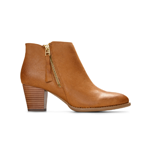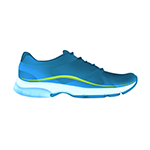
Revisiting Supination vs Pronation
By Brian Hoke, DPT, SCS
When looking into foot health, gait analysis, and appropriate footwear, we often come across the terms “supination” and “pronation”. But what are foot pronation and supination? These are descriptive terms for how our feet move, and they are frequently linked to other problems that we encounter such as leg pain, knee pain, and back pain. They are also some of the tenets of custom orthotics, especially when designing footwear meant to improve motion control, foot alignment, gait cycle, and grip. A better understanding of just what these terms are describing can make for a more informed consumer and can help us make the right choices for days of pain-free activity.
Supination and pronation describe the path of motion for the major joint just under our ankle (the subtalar joint). When we supinate with our foot off the ground, the foot will move down, and the sole of the foot will turn inward. Conversely, when our subtalar joint moves into pronation with the foot off the ground, the foot will lift upward, and the sole of the foot will move outward. You might also have heard about overpronation vs underpronation , which is associated with the rolling of the ankle. You can see this path of motion by moving your foot back and forth between supination and pronation.


When we stand up, foot supination and foot pronation will have dramatic effects on the alignment and position of our entire leg. The joints of our legs are linked together in predictable pathways. We sometimes use the term “kinetic chain” to describe how motion at one joint is linked to motion at other joints.
The motion of supination will cause the heel to lean outward and will carry the forces to the outside of our foot. The arch will get higher, and the leg will rotate outward. The knee will bow slightly outward and will straighten. This straightening has the effect of also making the leg a bit longer, and these forces are carried into our hip and lower back. People who supinate too much tend to have higher arches, ankle sprains, and hip and back pain from the lack of shock absorption.

By contrast, when we pronate in a standing position, the heel falls inward, the arches get lower and the leg rotates inward. This action makes the knee bend more and it becomes more “knock-kneed”. This has the effect of making the leg shorter and the hip and back must compensate for this action. People who pronate excessively frequently encounter arch pain, shin splints, knee pain, and outer hip problems from the IT band.

Pronation and supination are both necessary when we walk or run. In general, the motion of foot pronation will make the joints of our leg more supple and flexible. This is a good thing in walking or running when our foot first meets the ground. Pronation helps the foot adapt to uneven surfaces and helps us absorb shock. As our weight comes over the foot, we reverse the motion into supination. This action improves the stability of our foot so that we can carry the energy forward effectively. A key principle of foot health is to choose shoes that keep the foot centered so that we can both pronate and supinate normally. It is also sometimes necessary to have a custom insole (orthotic) that steers the foot back to the center if we pronate or supinate too much.


About the Author:
Specializing in orthopedic and sports physical therapy, Brian Hoke, DPT, SCS, has a particular interest in the biomechanical factors influencing lower limb rehabilitation. He is the owner of Atlantic Physical Therapy, a private practice in Virginia Beach, VA.
Brian is a board-certified Clinical Specialist in Sports Physical Therapy, a distinction achieved by fewer than 600 physical therapists in the U.S. He works with athletes of all levels—from recreational runners to elite professional and Olympic athletes. He has contributed chapters to two textbooks on the treatment of running injuries.
Brian is an avid educator, lecturing extensively in the U.S. and internationally. Since 1985, he has been a faculty member of the popular continuing medical education seminar, “When the Feet Hit the Ground, Everything Changes.” He co-developed and has taught the “Take the Next Step” course since 1990. In addition, he has been an adjunct faculty member of physical therapy programs at Old Dominion University and Touro College on Long Island, NY.
Brian’s expertise in sports physical therapy is a particular asset to Vionic ’s athletic line of footwear.









